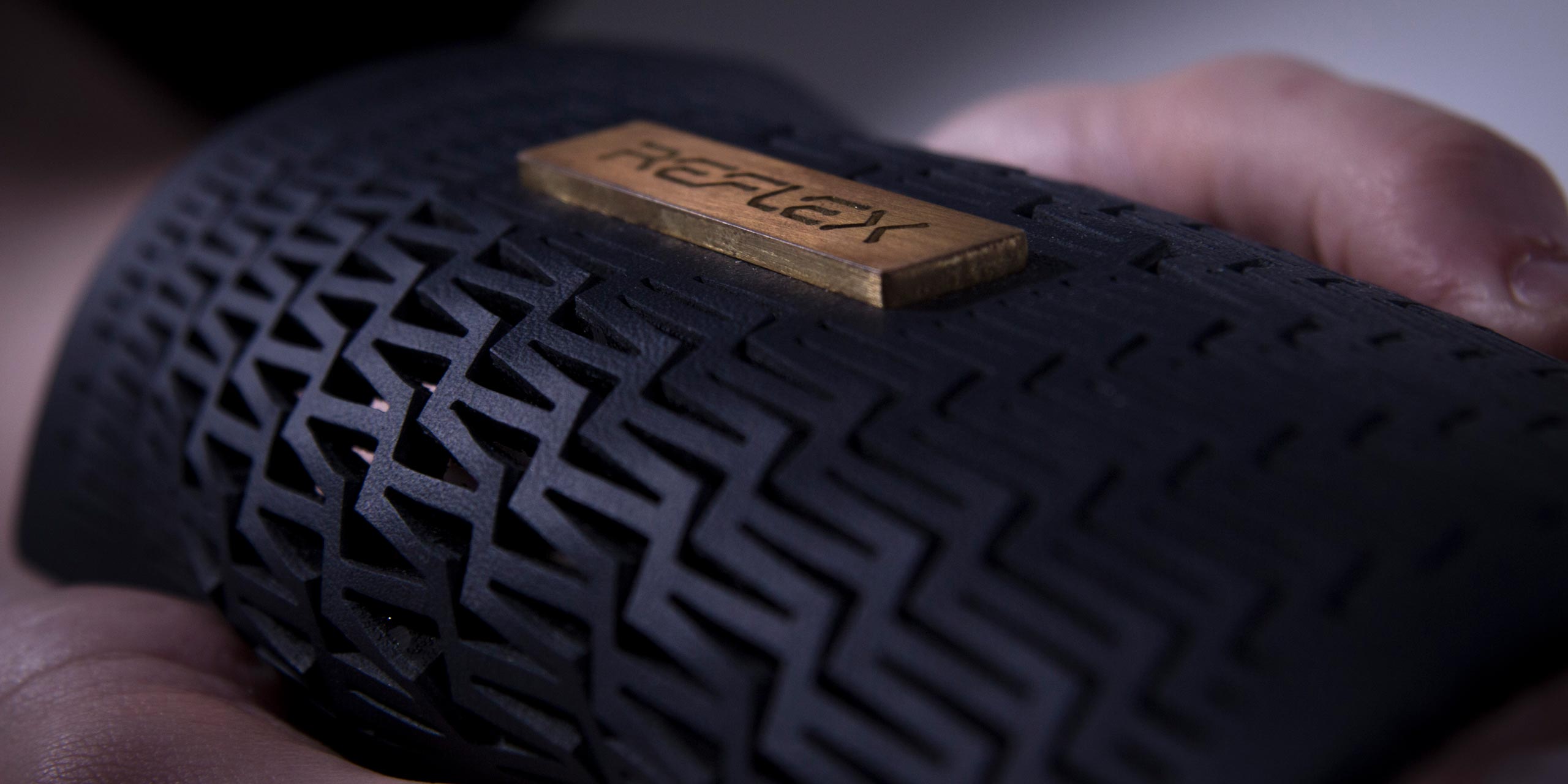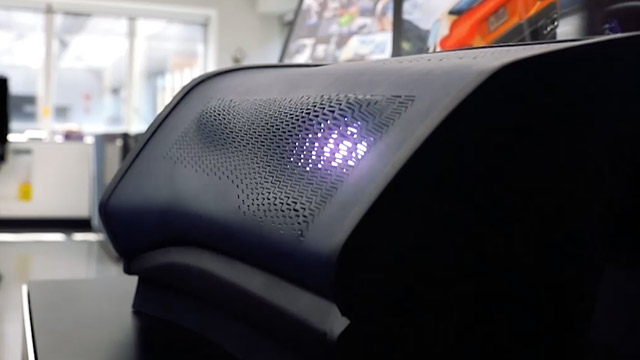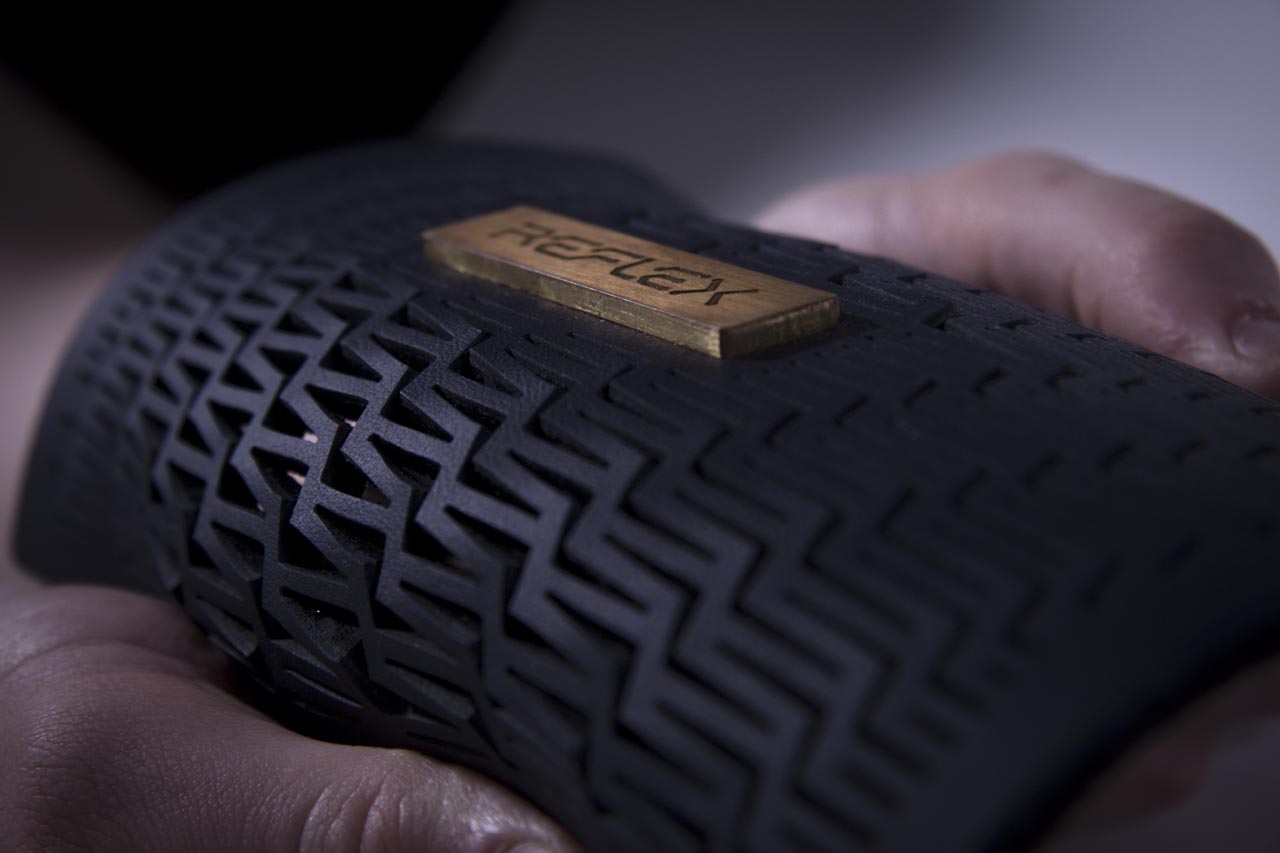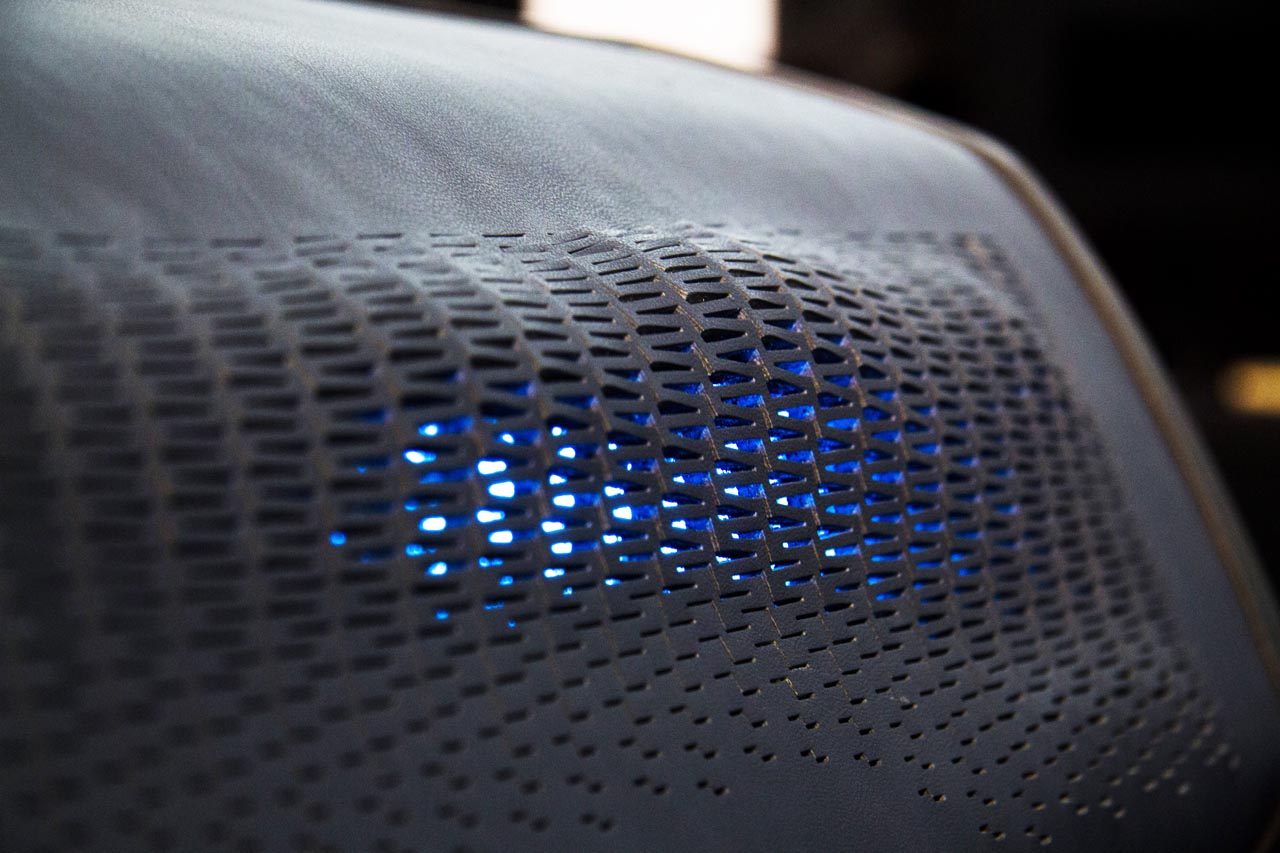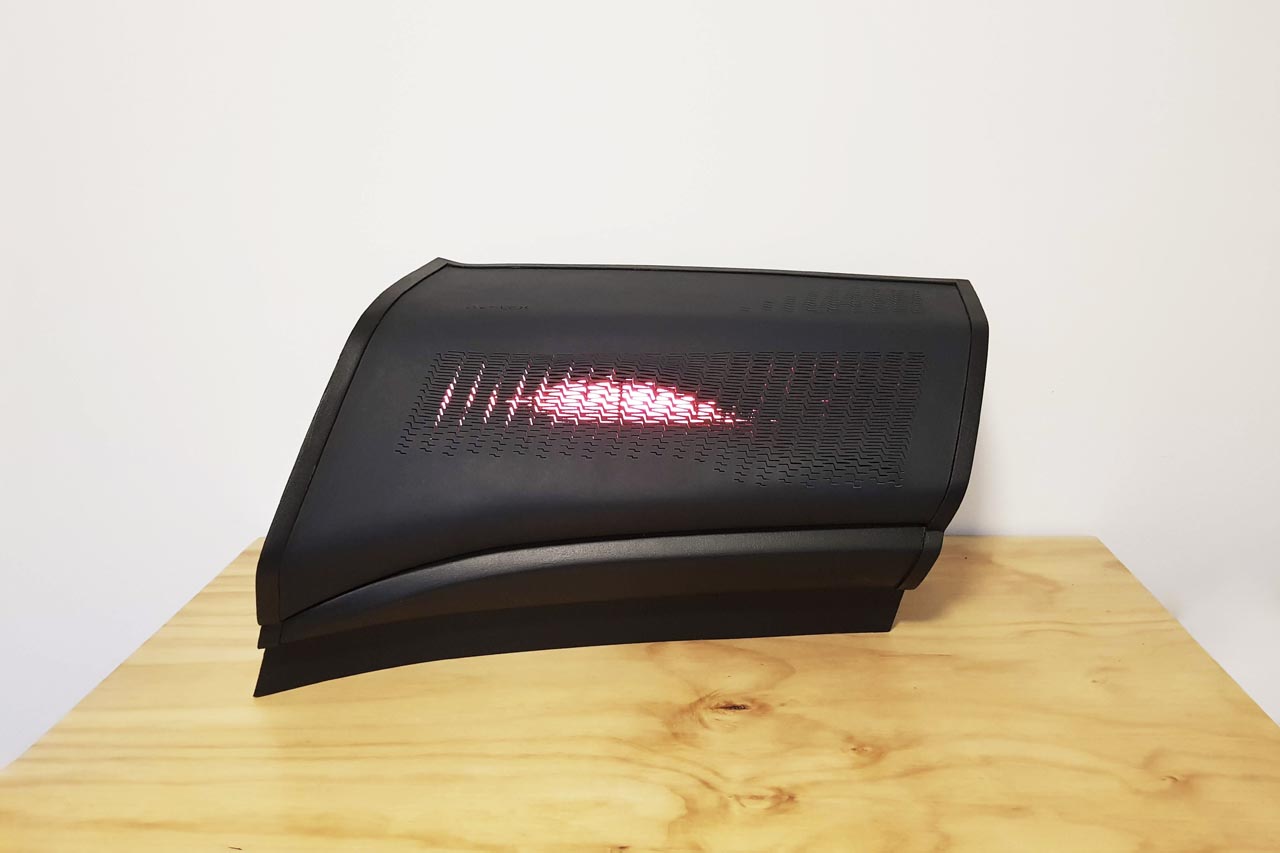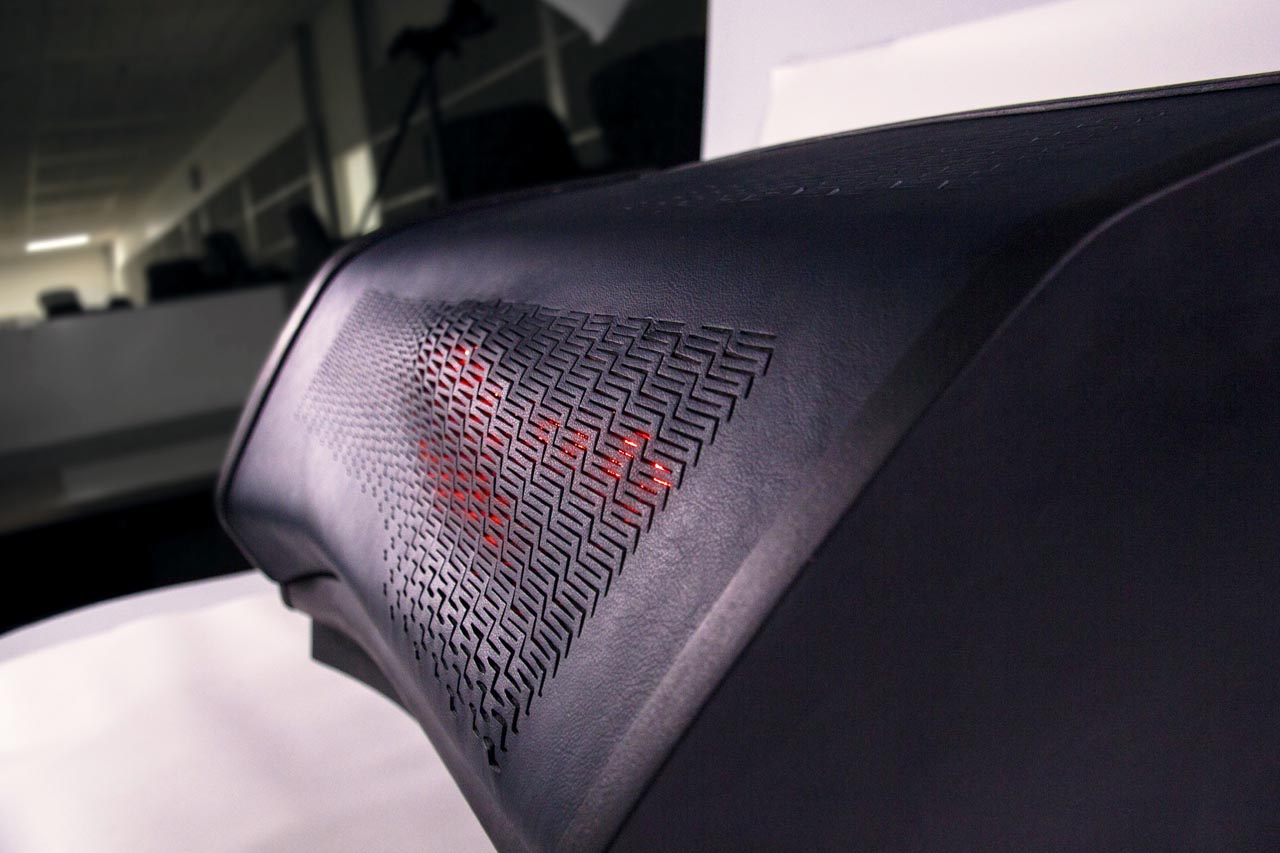Reflex is the combination of a wide range of design fields, culminated into a refined design concept and demonstrated in a working prototype executed to a high level of detail and quality. It is an original, novel and innovative concept, opening the door to new ways in which we interact with the built environment.
The movement of the material is organic and reactive, making the vehicle feel more animal than machine.
Reflex is an exploration of how we can create materials and surfaces that move like we do. By cutting a pattern into a material we can transform it into something that can stretch and bend however we choose.
To demonstrate this, Reflex materials were applied to a future automotive interior IP concept, incorporating HVAC and interior lighting functionality. By actuating the surface, the Reflex pattern opens and closes, controlling the flow of air and the output of light. The movement of the material is organic and reactive, making the vehicle feel more animal than machine.

